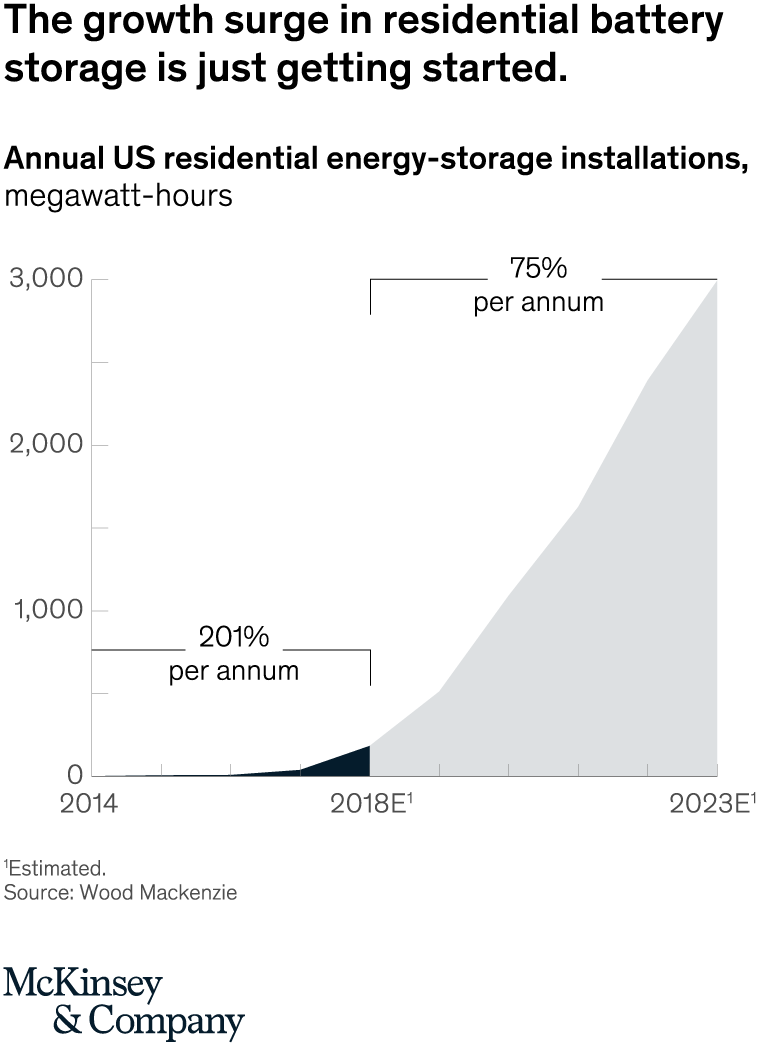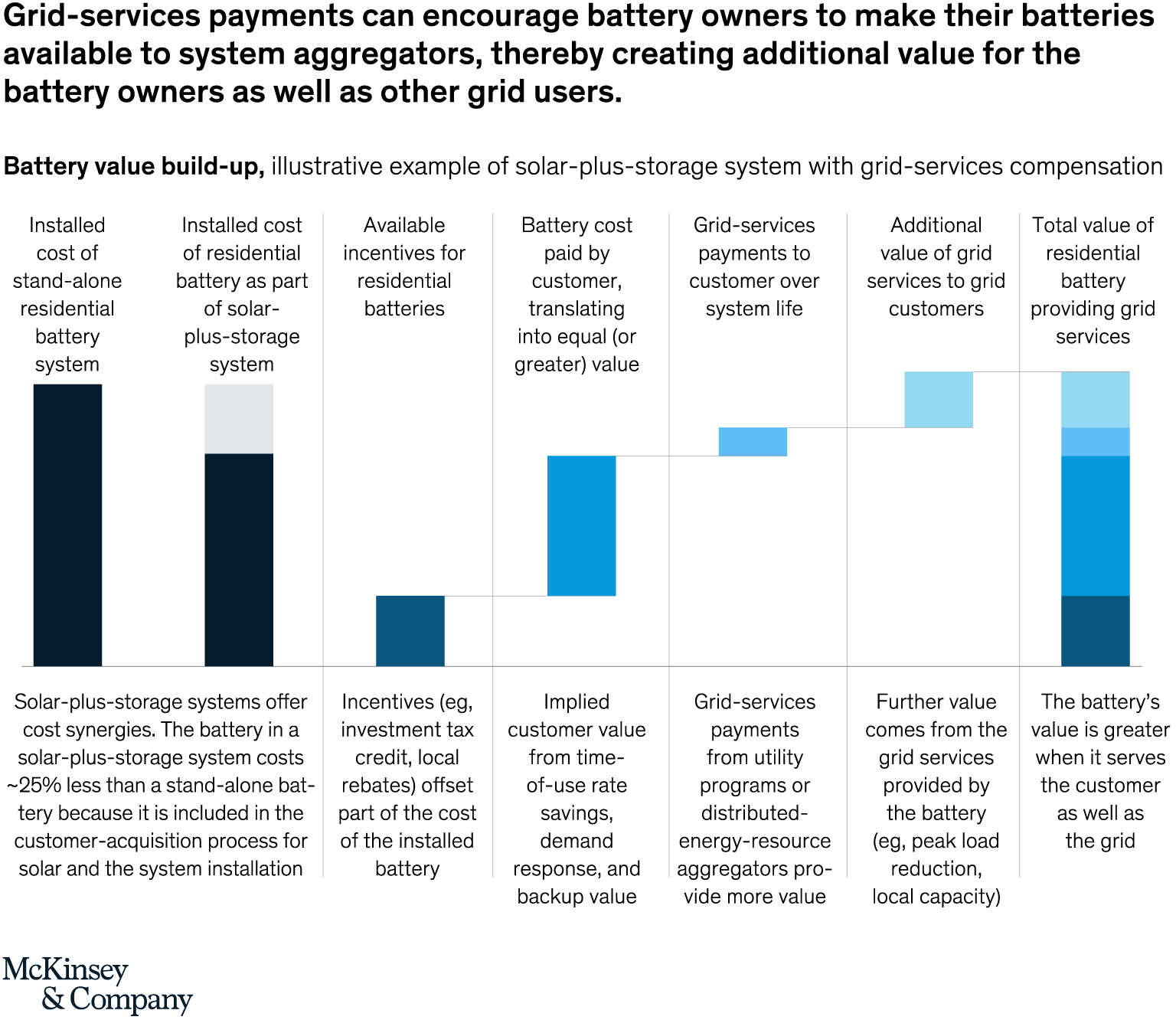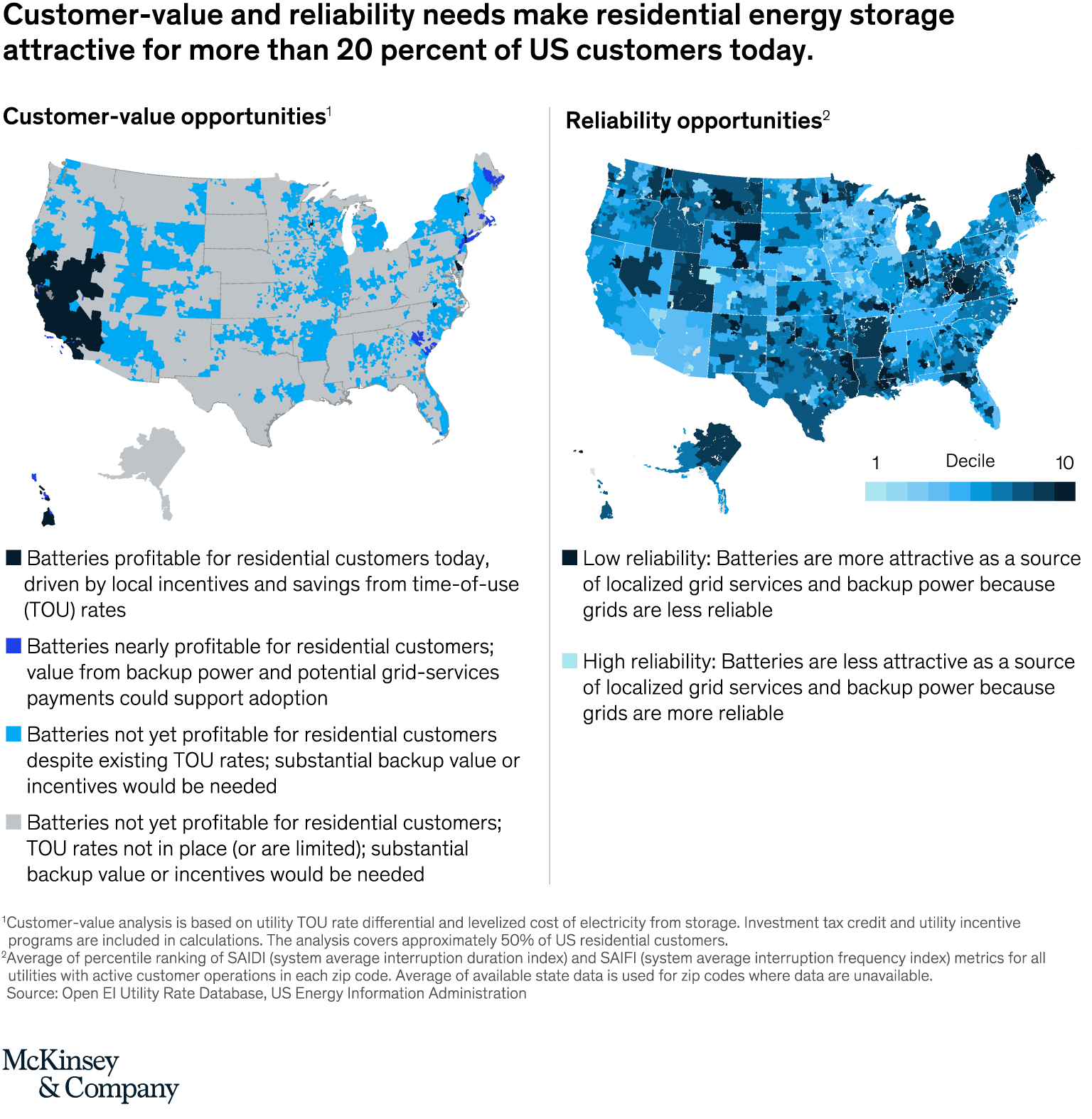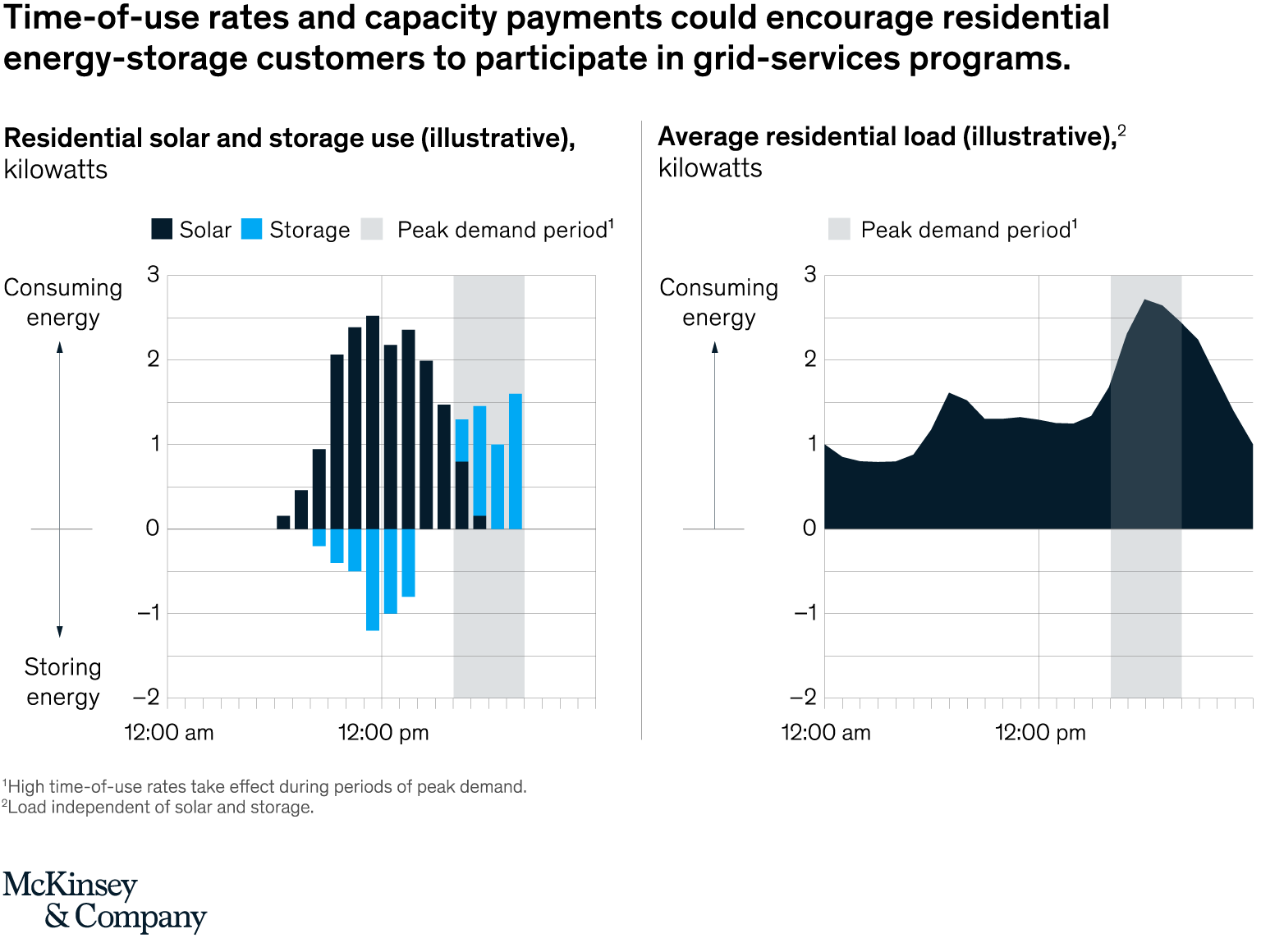
An increasing number of US households are adding residential power storage systems to reduce utility bills reductions and improve reliability. The number of residential power storage systems is expected to increase significantly in the next few years thanks decreasing technology costs, increasing electricity rates, enhanced government and utility incentives, and the increasing risk of power-disrupting natural disasters.
As residential storage becomes ever more widespread and neighborhood battery density increases, communities may be able to tap into these distributed power storage systems to reduce peak load, alleviate localized bottlenecks, and improve the quality of supplied power. Using resources from both the grid and residential systems could help make power grids more cost-effective, reliable, resilient, and safe.
Utilities are beginning to explore compensation schemes that encourage households to make the investment in residential storage systems by defraying part of the cost of the battery. Several early examples are already in flight: National Grid, Liberty Utilities, and the independent system operator in New England have all started residential battery programs to help drive adoption.


Residential energy storage is already attractive to 20 percent of US households, and the market for these systems is expected to expand significantly in the next few years. Growing interest and adoption are bringing us closer to a scenario in which residential battery storage can meaningfully decrease the burden on existing infrastructure, making the grid more stable, cost-effective, and reliable. However, fully realizing the potential of energy storage will require several market evolutions: increased customer confidence that the batteries will be there when they need them, proven dispatch reliability by network storage aggregators to ensure the utility that they can rely on these new resources, improved utility forecasting tools to integrate these new resources into capital and operating plans, and innovative rate structures to align cost and benefits.

Read our full article on how residential power storage could help support the power grid—and the role of utilities and regulators.